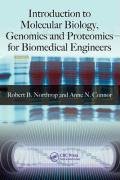

Most ebook files are in PDF format, so you can easily read them using various software such as Foxit Reader or directly on the Google Chrome browser.
Some ebook files are released by publishers in other formats such as .awz, .mobi, .epub, .fb2, etc. You may need to install specific software to read these formats on mobile/PC, such as Calibre.
Please read the tutorial at this link: https://ebookbell.com/faq
We offer FREE conversion to the popular formats you request; however, this may take some time. Therefore, right after payment, please email us, and we will try to provide the service as quickly as possible.
For some exceptional file formats or broken links (if any), please refrain from opening any disputes. Instead, email us first, and we will try to assist within a maximum of 6 hours.
EbookBell Team

0.0
0 reviewsIllustrates the Complex Biochemical Relations that Permit Life to Exist
It can be argued that the dawn of the 21st century has emerged as the age focused on molecular biology, which includes all the regulatory mechanisms that make cellular biochemical reaction pathways stable and life possible. For biomedical engineers, this concept is essential to their chosen profession. Introduction to Molecular Biology, Genomics, and Proteomics for Biomedical Engineers hones in on the specialized organic molecules in living organisms and how they interact and react.
The book’s sound approach to this intricately complex field makes it an exceptional resource for further exploration into the biochemistry, molecular biology, and genomics fields. It is also beneficial for electrical, chemical, and civil engineers as well as biophysicists with an interest in modeling living systems.
This seminal reference includes many helpful tools for self study, including—
Conveys Human Progress in the Manipulation of Genomes at the Molecular Level
In response to growing global interest in biotechnology, this valuable text sheds light on the evolutionary theories and future trends in genetic medicine and stem cell research. It provides a broader knowledge base on life-permitting complexities, illustrates how to model them quantitatively, and demonstrates how to manipulate them in genomic-based medicine and genetic engineering.
Consequently, this book allows for a greater appreciation among of the incredible complexity of the biochemical systems required to sustain life in its many forms.
A solutions manual is available for instructors wishing to convert this reference to classroom use.